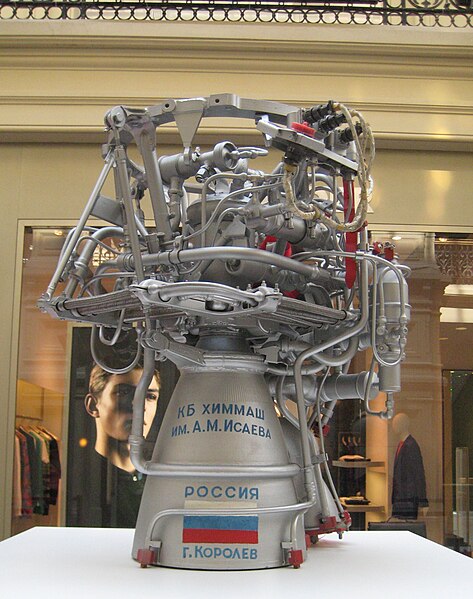The Venera program was the name given to a series of space probes developed by the Soviet Union between 1961 and 1984 to gather information about the planet Venus.
Full-scale model of the Venera 1 in the Memorial Museum of Cosmonautics
Venera station liquid based engine.
Space probe Venera on Venus's surface (artist recreation).
Model of a Venera lander
Venus is the second planet from the Sun. It is a terrestrial planet and is the closest in mass and size to its orbital neighbour Earth. Venus is notable for having the densest atmosphere of the terrestrial planets, composed mostly of carbon dioxide with a thick, global sulfuric acid cloud cover. At the surface it has a mean temperature of 737 K and a pressure of 92 times that of Earth's at sea level. These extreme conditions compress carbon dioxide into a supercritical state close to Venus's surface.
True colour image of Venus, as captured by MESSENGER. A global layer of bright sulfuric acid clouds permanently obscures the Venusian surface.
Venus to scale among the terrestrial planets of the Solar System, which are arranged by the order of their Inner Solar System orbits outward from the Sun (from left: Mercury, Venus, Earth and Mars)
Surface of Venus as seen by Venera 13.
Radar mosaic of two 65 km (40 mi) wide (and less than 1 km (0.62 mi) high) pancake domes in Venus's Eistla region








